| section: < previous | next > | | | |
chapter: << previous | next >> |
2.3 Starting the editor
This chapter describes how to start the editor. As a plugin of Eclipse, a few steps have to done to do this. If you installed the editor as plug-in (without source code), you can skip section a), by applying all further steps not on the runtime workbench, but on the primary eclipse instance.a) Starting the Runtime Workbench
If the VOCL-Plugin is installed properly, it can be started using the runtime-workbench of eclipse, which is a new eclipse instance, including only some of the plugins on startup, especially those, which are under development and not yet part of the regular plugin structure of eclipse. To start the runtime-workbench open the menu "Run" and select the item "Run".
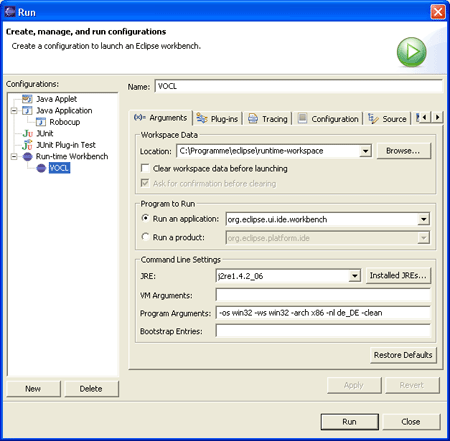 |
Fig. 2.3.1 - The Run-Editor of Eclipse
By doing this, the run-editor of eclipse will open (see fig. 2.3.1), where you can specify how to start the runtime-workbench. Select the "Run-time Workbench" entry from the Configurations-List and click the "New" Button located under this list. This will add a new entry, in which the configuration for the Run-time workbench is stored (fig. 2.3.1). You can leave all settings in default configuration, just add a name into the first textfield, e.g. VOCL, and click the "Apply" button to confirm the configuration. When clicking the "Run"-Button, the runtime-workbench is started. A new Eclipse GUI will open, in which the VOCL-Editor can be used.
b) Creating a new Project
On first startup, the runtime-workbench is as empty as it can be (fig. 2.3.2). Working with it is the same as working with the main eclipse instance, everything is organized in projects. That means, the first thing to do, when using the VOCL-Plugin, is to create a project, in which all resources are organized.
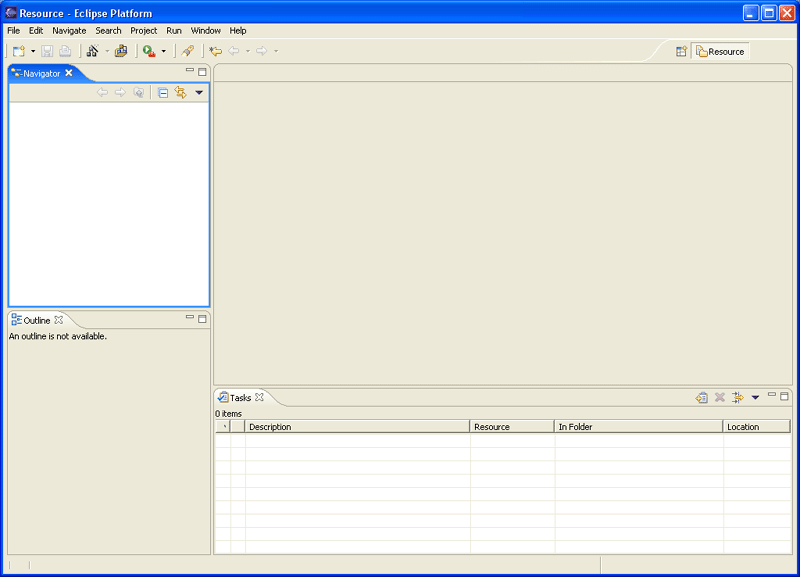 |
Fig. 2.3.2 - The Run-time Workbench of Eclipse
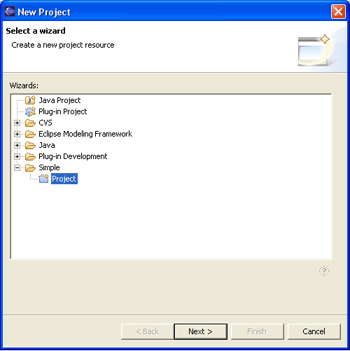 |
Fig. 2.3.3 - Selection of the Project-Type
 |
Fig. 2.3.4 - Specifying the projects name
c) Creating a new VOCL-Diagram-File
The last step before editing the VOCL-Diagrams is to create a file, where the diagrams are stored into. This is simply done by opening again the "File" menu, and the selecting the item "New" -> "Other", whereupon a new dialog opens, in which the new resource can be specified (see fig. 2.3.5). Choose the "VOCL Expression Editor file" from the "Sample Expression" folder and click the "Next"-Button. Then you are asked to enter a name for the new file (see fig. 2.3.6). You are free to enter any name, but the ending must be ".vocl". This is necessary, because eclipse recognizes the type of a file (as known from windows) by its last characters. Commit these settings by clicking the "Finish"-Button. The new file is created and opened ready for editing inside the runtime-workbench (see fig. 2.3.7).
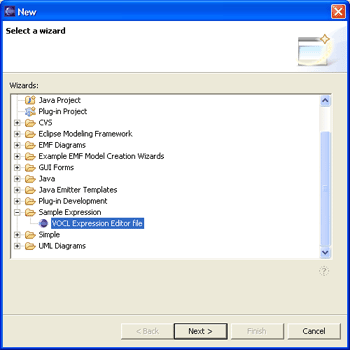 |
Fig. 2.3.5 - Selection of the File-Type
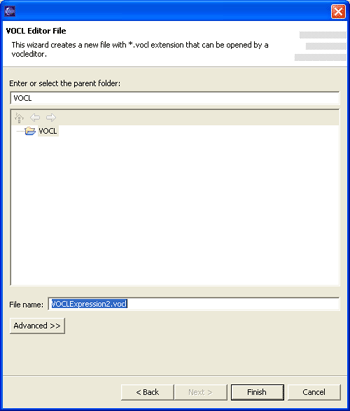 |
Fig. 2.3.6 - Specifying the filename
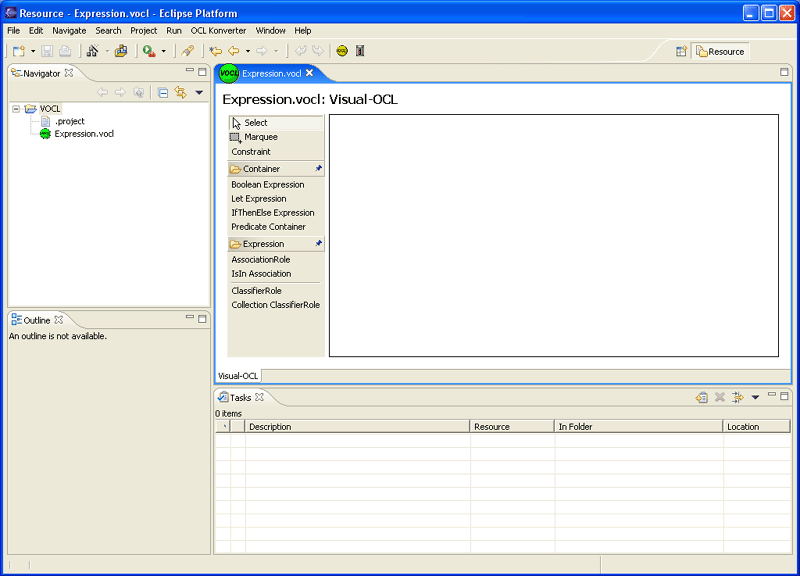 |
Fig. 2.3.7 - Editor after file creation
| section: < previous | next > | | | |
chapter: << previous | next >> |
